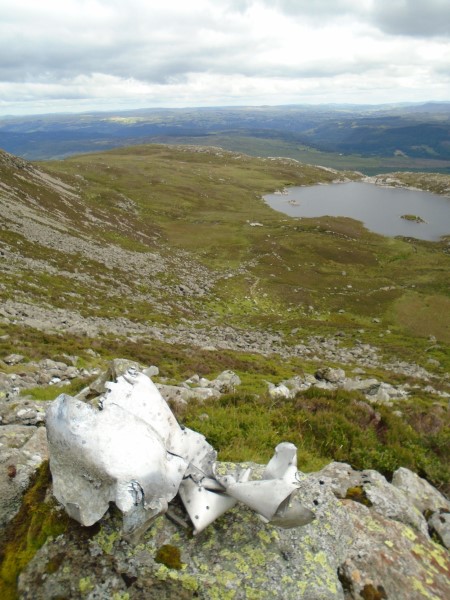Cessna 337 Skymaster G-ATNY, owned by Ron Webster (Midlands) Ltd, flew into Moel Siabod near Dolwyddelan on the 8th June 1979
| Victor Wilson | Mr | Pilot | Killed |
| Christopher Fletcher | Mr | Passenger | Killed |
| Thomas P. Greenan | Mr | Passenger | Killed |
| Joseph Archer Gregory | Mr | Passenger | Killed |
| Rodney Joseph Gregory | Mr | Passenger | Killed |
| Thomas Hood | Mr | Passenger | Killed |
The aircraft had been hired to fly from Coventry Airport at Baginton to Ronaldsway on the Isle of Man. The pilot planned a VFR flight and was to fly via Droitwich and Great Ormes Head before proceeding across the Irish Sea to Ronaldsway though no actual flight plan was filed. Having taken off at 07:32 the aircraft passed over a radio navigation beacon at Honiley not far from Baginton en-route to Droitwich before turning to the north-west towards North Wales. After turning to the NW Mr Wilson was in contact with the controller at RAF Shawbury to receive advice about any other low level traffic. G-ATNY was identified by the controller at Shawbury on radar after asking the pilot to make a turn and passed its position as 10 nautical miles north-west of Kidderminster at 3,000ft on a track of 310o. The controller reported there was no conflicting traffic and that the pilot should return to his original course, shortly after which Mr Wilson replied to say the aircraft had taken up a course of 310o again.

Thirteen minutes after being in contact with Shawbury Mr Wilson changed radio frequency to the London Information frequency and during the brief contact he said that after passing the coast if he had any difficulty re-establishing contact he would change to the Ronaldsway frequency. At 08:06 London Information was again in contact with G-ATNY to confirm the point of departure from the coast after which no further contact was made and it was assumed that the pilot of G-ATNY had changed to the Ronaldsway frequency as indicated by their first contact.

As no flight plan had been submitted neither Coventry nor London Information were required to check with Ronaldsway that the aircraft had arrived, and Ronaldsway were not expecting the arrival of the aircraft, they had had two phone calls that morning asking for weather information but it was not known who they were from. Staff at Coventry, the owner of the aircraft and relatives of the passengers knew that the aircraft might not return until the following day and so they did not miss it until late on the morning of the 9th June. At this point it was confirmed with Ronaldsway that the aircraft had never arrived nor had it landed anywhere else and a search was started by the RAF, initially of the Irish Sea between Great Ormes Head and the Isle of Man using two Wessex helicopters from RAF Valley and a Nimrod from either St Mawgan or Kinloss covered the land route. During the afternoon of the 9th June a hill walker on Moel Siabod discovered aircraft wreckage and reported it to the Police who were flown to the site along with Mountain Rescue Teams by one of the Wessex helicopters from RAF Valley. Subsequent investigation found that the aircraft had been heard from Dolwyddelan and a sound which would have been its impact was heard at 08:15 on the 8th but this went unreported at the time.

The aircraft had struck the northern spur of Moel Siabod above Llyn y Foel about 30 to 50 feet below the crest of the ridge, which is at 2,600ft, on its eastern side while cruising in the region of 150 knots. The impact caused significant damage to the airframe which was then largely destroyed by fire. Recovered altimeters indicated that they may have been showing around 2,700ft at the time of the crash. A playback of the radar returns from Clee Hill showed that following the identification turns during Mr Wilson’s contact with Shawbury the aircraft had then flown on a constant heading, which was well to the port of the intended track, until it faded from radar contact shortly before it flew into the mountain in low cloud.

It was concluded that the likely reason for the drift from the planned track was due either to an incorrect compensation for wind drift or failure to apply the magnetic variation to the heading. After entering cloud Mr Wilson should either have climbed to a minimum safe altitude which for the route was close to 4,500ft or turned back to exit cloud as the flight was being conducted under Visual Flight Rules and Mr Wilson did not hold an instrument rating permitting an IFR flight.

